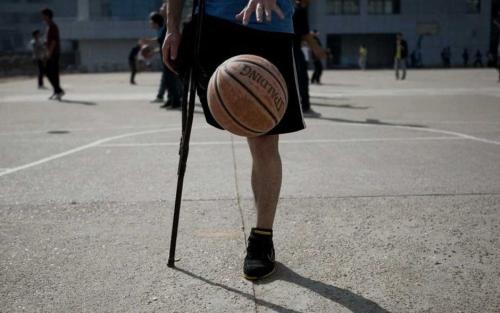(单词翻译:单击)
中英文本
Adults with disabilities who get no aerobic physical activity are 50% more likely to have heart disease, stroke, diabetes, or cancer.
身有残疾的成年人无法进行有氧运动,他们多出50%的可能性容易患上心脏病、中风、糖尿病或者癌症。
In the U.S. more than 21,000,000 adults 18 to 64 years of age have a disability.
在美国,有2100多万18至64岁的成年人身有残疾。
These are adults with serious difficulty walking, climbing stairs, hearing, seeing, concentrating, remembering, or making decisions.
他们难以行走,不能上台阶,在听、说、看、集中注意力、记忆以及做决定方面都存在严重困难。

Adults with disabilities are 82% more likely to get physical activity if their doctors recommend it.
如果医生建议,那么身有残疾的成年人会多出82%的可能性去锻炼身体。
Doctors and other health professionals can use these 5 steps to help their patients with disabilities be physically active.
医生和其他健康专业人士可以使用以下5个步骤来帮助身有残疾的病人进行锻炼:
1. Know the Health and Human Services Physical Activity Guidelines for Americans;
1.了解《美国身体健康和人类服务运动指南》
2. Ask patients about their current level of activity;
2.询问病人目前的运动水平
3. Discuss barriers to physical activity;
3.讨论运动的障碍
4. Recommend physical activity options; and 5. Refer patients to resources and programs.
4.推荐运动选择;5.向病人推荐资源和项目
译文属可可英语原创,未经允许,不得转载。
重点讲解
1.be likely to 可能
例句:But he also knew where she'd be likely to go on the way home from the mall.
但是,他又想,在从购物中心到家的路上也很有可能。
2.refer to 参考,涉及
例句:Writers often refer to a dictionary.
作家时常参考字典。


